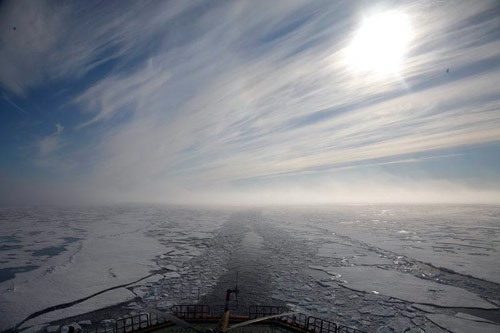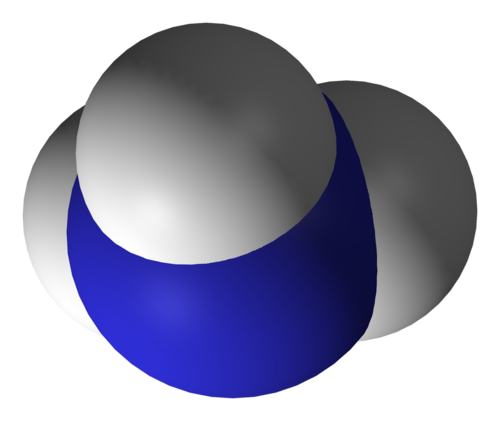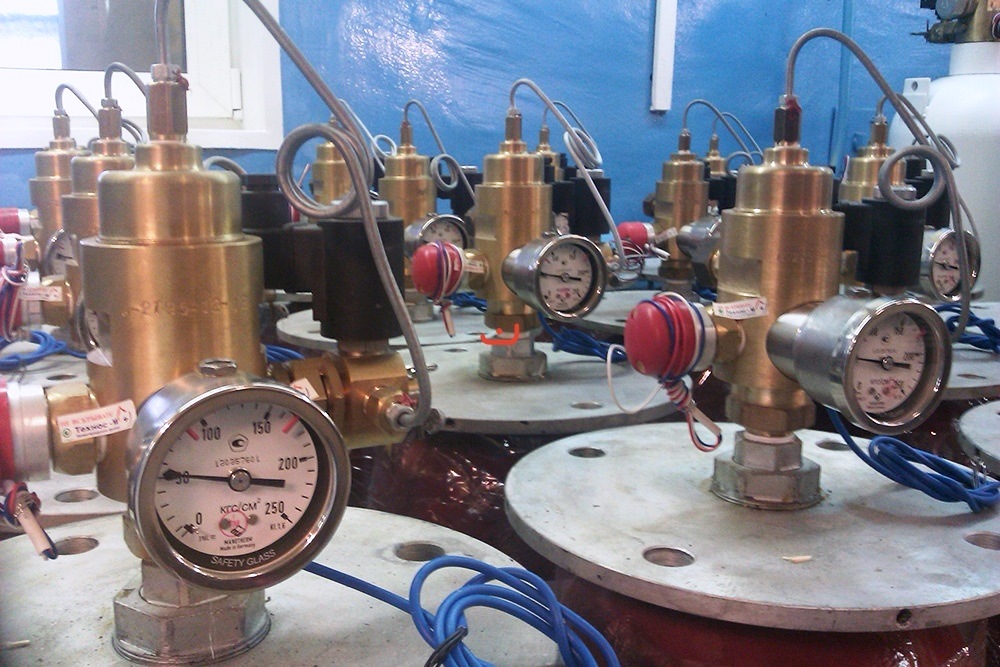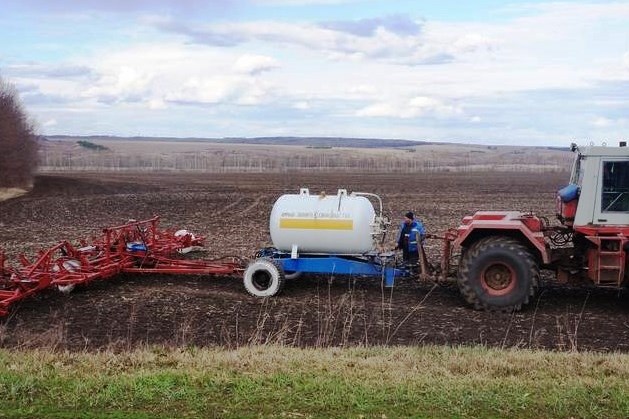.jpg)
Gas fire-extinguishing is a fire extinguishing type, when through release of extinguishing agents (called in Russia “Gaseous Fire-Extinguishing Substances - hereinafter GFE-S) from Fire Suppression Systems (further FSSystem), consisted of storage containers (called in Russia “Gaseous Fire Suppression Modules” - hereinafter GFSM), in the protected room created conditions under which stops the burning process. In accordance with the regulatory documents, gas fire extinguishing is exercise on the condition of people evacuating from the protected premises.
Gas fire extinguishing is applicable for suppression of main fire classes: A (burning of solid substances), B (burning of liquid substances), C (burning of gaseous substances) and electric equipment (electric installations under voltage).
The main advantages of gas fire extinguishing are:
- Safety of application in respect of materials being protected;
- High efficiency and quickness of fire extinguishing;
- Three-dimensional extinguishing;
- Long service life of gas fire-extinguishing installations.
GFE-S Classification
| First group of GFE-S - compressed gases | Second group of GFE-S - liquefied gases | |
|---|---|---|
| GFE-S name | argon (Ar), nitrogen (N2), carbon dioxide (СО2) and their mixtures (Inergen – N2 52 % (vol.)+ Ar 40 % (vol.)+ СО2 8 % (vol.)) | refrigerant 23 (R-23, Trifluoromethane, CHF3), refrigerant 125 (R-125a, Pentafluoroethane, CHF2CF3) and refrigerant 227еа (R-227ea, Heptafluoropropane, CF3CFHCF3) |
| Fire-extinguishing process | Reduction of oxygen concentration to the degree that does not allow burning. When gas is released into the premises where burning takes place, oxygen content is sharply lowered to the value of 12% and less, thus are created the condition that do not support burning. | Chemical inhibition (retardation) of combustion reaction. Getting in the combustion zone, these substances are decomposed intensely with formation of free radicals that react with primary combustion products until complete extinction. |
| FSSystem operating time | ~ 60 seconds | ~ 10 seconds |
Proper selection of GFE-S at the requirements specification stage
In selection of GFE-S must be taken into account, the following conditions: assurance of employees' safety during operation and maintenance, provision of an efficient fire-extinguishing system, and economical efficiency of investments.
► Medical aspects of GFE-S selection include: toxicity of fire-extinguishing media for people and equipment in case of leakage due to loss of sealing in the installation or false actuation of fire detection sensors, and of course, generation of highly toxic substances due to thermo-oxidative destruction of fire-extinguishing means and polymer materials (plastic constructions, cables) during FSSystem operation. If we rank GFE-S according to toxicity in case of a massive leak - refrigerants are preferable, since only 5% (by weight) fed for fire extinguishing and been exposed to thermal decomposition. An important factor is also quality of GFE-S because poor-quality raw materials containing chemical impurities that contaminate the main substance during production processes constitute the greatest toxic hazard during GFE-S thermal decomposition.
► Human safety in case of GFE-S leaks to the volume of the room being protected will be defined by dynamics of growth of GFE-S concentration and duration of human exposure. Slow leakage of GFE-S is accompanied by prolonged contamination of air in the room and is safe under conditions of adequate ventilation. In case of absence of ventilation system - refrigerants will be the best choice to least toxic danger.
► Refrigerants are also more effective in fire extinguishing as compared to compressed gases, especially when it deals with fire extinguishing speed. Speaking about effectiveness of funds invested, it should be noted that fire extinguishing concentration of compressed gases is higher than that of refrigerants. That is why, in average, it is required 25-30% more gas and, as a result, number of storage containers (GFSM) increases by one third. Choice of GFE-S is connected with understanding of the risk level of the system under pressure. Simple example: FSSystem operating overpressure for compressed gases is ~ 120-150 bar, and that of SGFE based on refrigerants is 3-4 times less ~ 40 bar).
International practice of GFEM application
FSSystem based on compressed gases (argon (Ar), nitrogen (N2), Inergen) and СО2.
.png)
Fire-extinguishing with the help of compressed gases and СО2 is based on the principle of atmosphere dilution through reducing oxygen concentration less than 12.5 % until complete stop the process of burning. Meanwhile, a long-lasting presence of gas medium with reduced oxygen content can, in some cases, lead to an increase in carbon oxide (CO) quantity - highly toxic product of incomplete combustion of substances and materials. Therefore, these GFE-S can be used only without people in the room. If this condition can't be observed, a fast evacuation of people who do not have breathing apparatuses should be provided, because excessive evacuation delay can cause an acute hypoxic effect on human bodies, leading to the loss of ability to leave the danger area or can lead to lethal outcome (according to NАSА's data).
FSSystem based on liquefied gases (refrigerant 23 (R-23, Trifluoromethane, CHF3), refrigerant 125 (R-125a, Pentafluoroethane, CHF2CF3) and refrigerant 227еа (R-227ea, Heptafluoropropane, CF3CFHCF3), except for СО2).
.png)
Chemical inhibitors have another fire-extinguishing mechanism. Refrigerant's fire-extinguishing concentration is several times less than that of compressed gases and makes 7.2 - 14.6 percent by volume. With such refrigerant's concentration, the residual concentration of oxygen is 17.3-19.9%, which allows free human breathing. Such oxygen concentration corresponds to air rarefaction at an altitude of 2.5 thou. meters and is easily endured by the absolute majority of people. Therefore, in case of incidental presence of people, operation of FSSystem using these GFE-S, due to sufficient oxygen content, may be harmless if people leave the room within 30-60 seconds.
.jpg)
Safety Margin (SM on the scheme, is the difference between maximum allowable concentration and fire-extinguishing concentration of GFE-S) of refrigerant 23 (R-23, Trifluoromethane, CHF3) is the greatest (35.4%), which not only allows free breathing, but also guarantees the absence of pathological impact on people's health during long time.
.jpg)
What should be considered during approval of FSSystem design:
► When calculating GFE-S mass in accordance with Russian Fire Safety Standards (NPB 88-2001), many designing organizations do not have a possibility to perform a hydraulic calculation of FSSystem for liquefied gases, define exactly pipeline diameters and spray nozzle squares. Due to the NPB 88-2001 does not offer calculation techniques and programs except calculations for carbon dioxide (low-pressure). As a result, pipeline diameters in many designs usually shown approximately and characteristics of nozzle simply are not considered.
► In order to reduce the number of GFEM, their filling "up to the gills" is practiced not considering the volume of gas-displacer. At that, the results of hydraulic calculation (provision of normative time for supplying the determined GFE-S fire-extinguishing concentration into the protected premises from GFEM according pressure of gas-displacer) are totally ignored. The practice has it that in a number of cases after performing hydraulic calculations, it is necessary to increase the number of GFEM with reducing their filling volume and increasing the volume of gas-displacer in them.
► In accordance with GOST R 50969 - GFSs filled with Refrigerant 23 (R-23, Trifluoromethane, CHF3) without any gas-displacer, therefore, the designs must provide technical means for GFE-S weight control.







